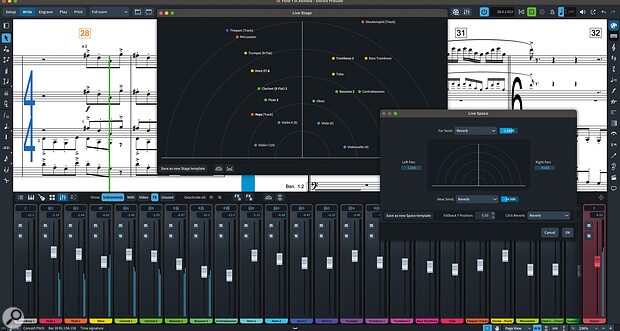Steinberg’s Dorico inches ever closer to full DAW status...
The evolution of Dorico from a notation application contender with a storied development cast and some real potential to the innovation‑driving rising star it has now become has been well‑documented in the pages of SOS, including the reviews of Version 3 in the February 2020 issue and Version 4 in June of 2022. And while program updates seem to be coming faster than ever these days, it is still fair to ask: is it really time for another Dorico upgrade? Given that music engraving is an ancient art whose relationship to computers started at the University of Illinois over 60 years ago, just what else is left to do in this realm? If Dorico 5 is any indicator, it turns out that much is still possible in this area. Dorico 4 established the franchise as a deeply functional tool for music engraving, and now Dorico 5 — while still adding some significant new engraving upgrades — takes a major leap forward as a production workstation. In the final analysis, it is easily a sufficiently significant update to warrant the new number and price tag. Let’s dive into some of the highlights.
What’s New
One of the remarkably useful additions in Dorico 5 is the inclusion of Stage and Space Templates. With this feature, the individual staves or instruments in the score can be spaced on a virtual sound stage, including the mimicking of stage depth as well. Users may navigate to the mixer toolbar and click on the Live Stage button to open the virtual stage. The instruments can then be dragged forward, backwards, and left to right on the stage. There is also the ability to click and drag to select a larger group of instruments, and then proportionally expand or contract the space in an existing balance with a single click, helping with quick edits and mix comparisons. Predictably, left to right shifts modify the panning in the mix console, while an increase in stage depth increases the send level to the chosen reverb to mimic distance and depth.
The settings related to Live Stage are accessed via the Live Space button, wherein the limit of panning may be set, as well as the level of the chosen reverb. Users may also pick two different reverbs for their near and far sends, respectively. While this new feature is clearly directed towards composers less comfortable with the audio mixing process, power users should not scoff at the usefulness of this feature, as it presents a far more intuitive approach to mixing with an ear towards creating an optimum balance on a realistic sound stage. Even as a starting point for achieving a realistic balance...
You are reading one of the locked Subscribers-only articles from our latest 5 issues.
You've read 30% of this article for free, so to continue reading...
- ✅ Log in - if you have a Subscription you bought from SOS.
- Buy & Download this Single Article in PDF format £1.00 GBP$1.49 USD
For less than the price of a coffee, buy now and immediately download to your computer or smartphone.
- Buy & Download the FULL ISSUE PDF
Our 'full SOS magazine' for smartphone/tablet/computer. More info...
- Buy a DIGITAL subscription (or Print + Digital)
Instantly unlock ALL premium web articles! Visit our ShopStore.


